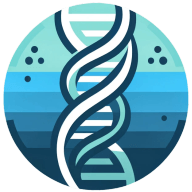6 Ways Dna Sequencing is Revolutionizing Cancer Research
DNA sequencing has become a game-changer in the fight against cancer. This powerful technology is revolutionizing how researchers understand, detect, and treat various forms of the disease. From precise tumor profiling to early detection through liquid biopsies, DNA sequencing is opening new frontiers in cancer research and patient care.
- NGS Enables Precise Cancer Profiling and Treatment
- Tracking Tumor Evolution Informs Treatment Strategies
- Single-Cell Sequencing Reveals Tumor Heterogeneity
- Liquid Biopsies Advance Early Cancer Detection
- Gene Fusions Drive Cancer Growth
- Epigenetic Mapping Uncovers Cancer Development Mechanisms
NGS Enables Precise Cancer Profiling and Treatment
One key way DNA sequencing is being used to study cancer is through the application of Next-Generation Sequencing (NGS), which enables detailed genetic profiling of tumors. This is reshaping diagnostics, prognostics, and personalized treatment.
Applications of DNA Sequencing in Cancer Research:
Identification of Driver Mutations
DNA sequencing allows researchers to detect mutations that initiate or drive cancer progression, such as BRCA1/2 in breast and ovarian cancer, or EGFR and KRAS in lung cancer.
Understanding these mutations helps stratify patients for targeted therapies.
Predicting Treatment Response
Sequencing can reveal whether a patient is likely to respond to specific therapies.
For example, tumors with high tumor mutational burden (TMB) or microsatellite instability (MSI) are more likely to respond to immunotherapies.
Monitoring Resistance Mechanisms
Longitudinal sequencing (e.g., via liquid biopsy) enables clinicians to observe the evolution of cancer during treatment.
This helps in identifying resistance mutations, such as EGFR T790M, and adjusting therapy accordingly.
Early Detection and Minimal Residual Disease (MRD)
Circulating tumor DNA (ctDNA) analysis, informed by sequencing, is being used for early detection and to monitor minimal residual disease after treatment—key for recurrence prediction.
Development of Novel Therapies
Sequencing data contributes to drug development by identifying new mutational targets and understanding tumor biology in depth.
In summary, DNA sequencing is not only deepening our understanding of cancer's genetic complexity but also enabling clinicians to deliver more precise, responsive, and personalized care to patients.

Tracking Tumor Evolution Informs Treatment Strategies
DNA sequencing has made it possible to track how tumors change over time. Scientists can now take samples from a tumor at different stages and see how its genetic makeup evolves. This helps them understand how cancer adapts and becomes resistant to treatments. By studying these changes, researchers can develop more effective therapies that target specific genetic alterations.
This approach is like creating a movie of cancer's life story, rather than just taking a single snapshot. Armed with this knowledge, doctors can make better decisions about when and how to treat patients. Join the fight against cancer by supporting research initiatives that use time-series sequencing.
Single-Cell Sequencing Reveals Tumor Heterogeneity
Recent advances in DNA sequencing allow scientists to examine the genetic makeup of individual cancer cells. This technique reveals that tumors are not uniform but contain diverse cell populations with different genetic profiles. Understanding this complexity helps explain why some cancer treatments work for some patients but not for others.
Researchers can now identify rare cell types within a tumor that might be responsible for drug resistance or cancer spread. This knowledge opens up new possibilities for personalized medicine, where treatments can be tailored to target specific cell populations within a tumor. Support the development of single-cell sequencing technologies to advance cancer research and treatment.
Liquid Biopsies Advance Early Cancer Detection
DNA sequencing is helping researchers find new ways to detect cancer early. By analyzing blood samples, scientists can now identify tiny amounts of DNA released by tumors before they become visible on scans. This approach, known as liquid biopsy, could revolutionize cancer screening and make it less invasive. Early detection significantly improves the chances of successful treatment and survival.
Researchers are working to develop tests that can not only detect cancer but also pinpoint its location in the body. These advancements could lead to routine cancer screenings that are as simple as a blood test. Advocate for increased funding for research into early cancer detection methods.
Gene Fusions Drive Cancer Growth
Scientists are using DNA sequencing to uncover gene fusions that drive cancer growth. Gene fusions occur when parts of two different genes join together, creating abnormal proteins that can cause cells to divide uncontrollably. These fusion events were previously difficult to detect but are now being identified in many types of cancer. Understanding these fusions is crucial because they can be targeted with specific drugs, leading to more effective treatments.
Researchers are creating databases of known gene fusions to help doctors quickly identify and treat patients with these genetic alterations. The discovery of new gene fusions continues to provide insights into cancer biology and potential treatment strategies. Support initiatives that aim to catalog and study gene fusions in various cancer types.
Epigenetic Mapping Uncovers Cancer Development Mechanisms
DNA sequencing is shedding light on the role of epigenetic changes in cancer development. Epigenetic modifications are chemical tags on DNA that can turn genes on or off without changing the DNA sequence itself. Scientists can now map these modifications across the entire genome of cancer cells. This information helps explain why some genes become overactive in cancer while others are silenced.
Understanding epigenetic patterns in cancer cells could lead to new diagnostic tools and treatments that target these reversible modifications. Researchers are exploring drugs that can reset abnormal epigenetic patterns in cancer cells, potentially restoring normal cell function. Encourage further research into epigenetic therapies as a promising avenue for cancer treatment.

